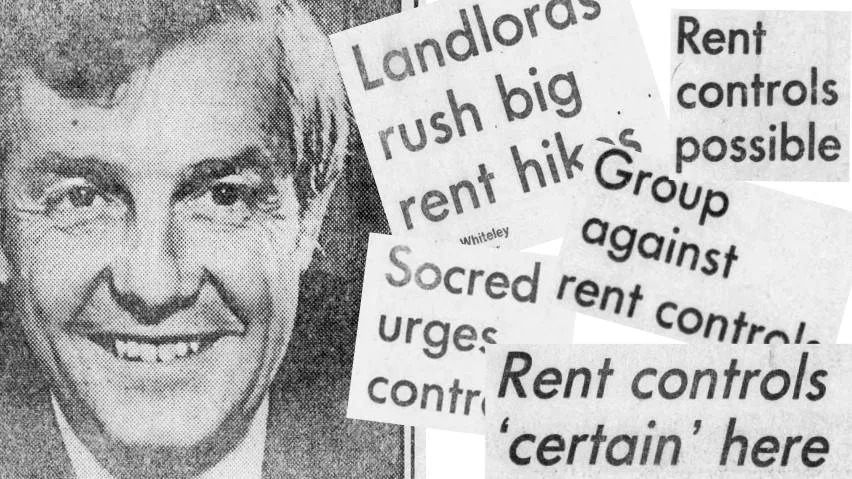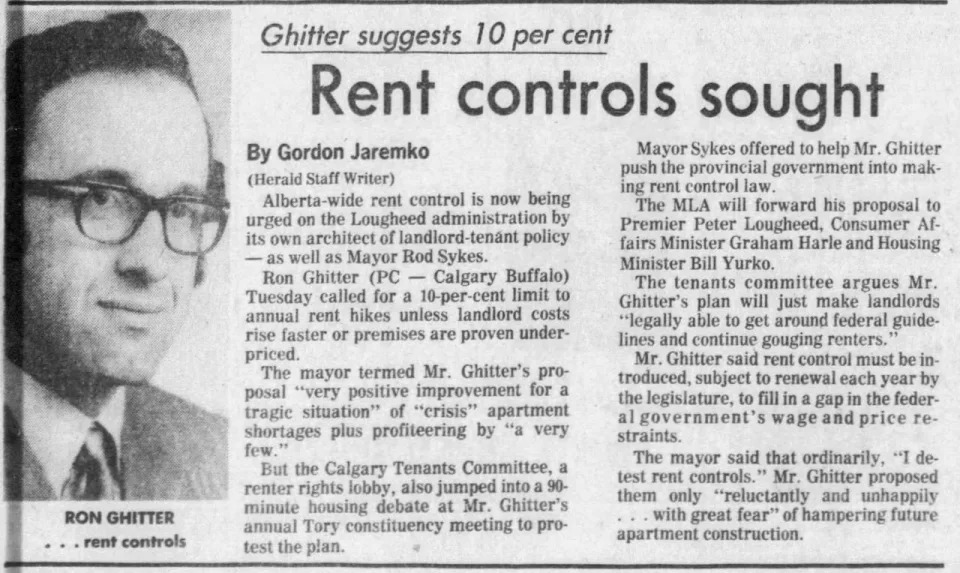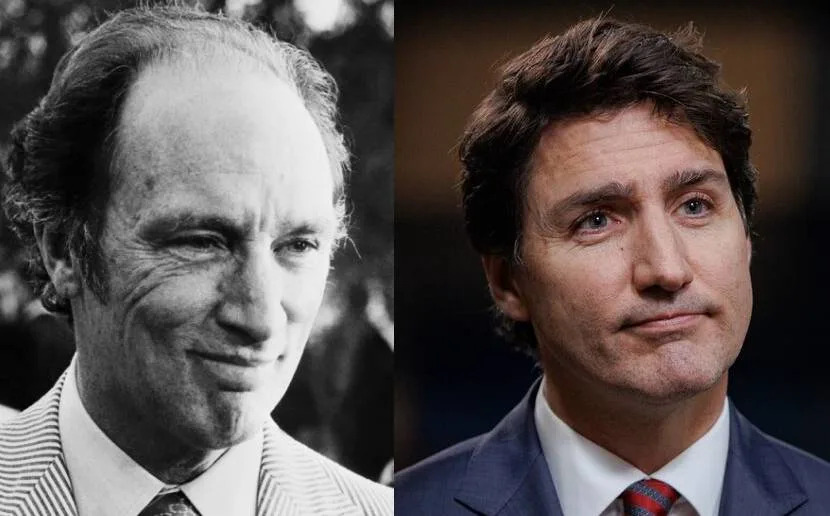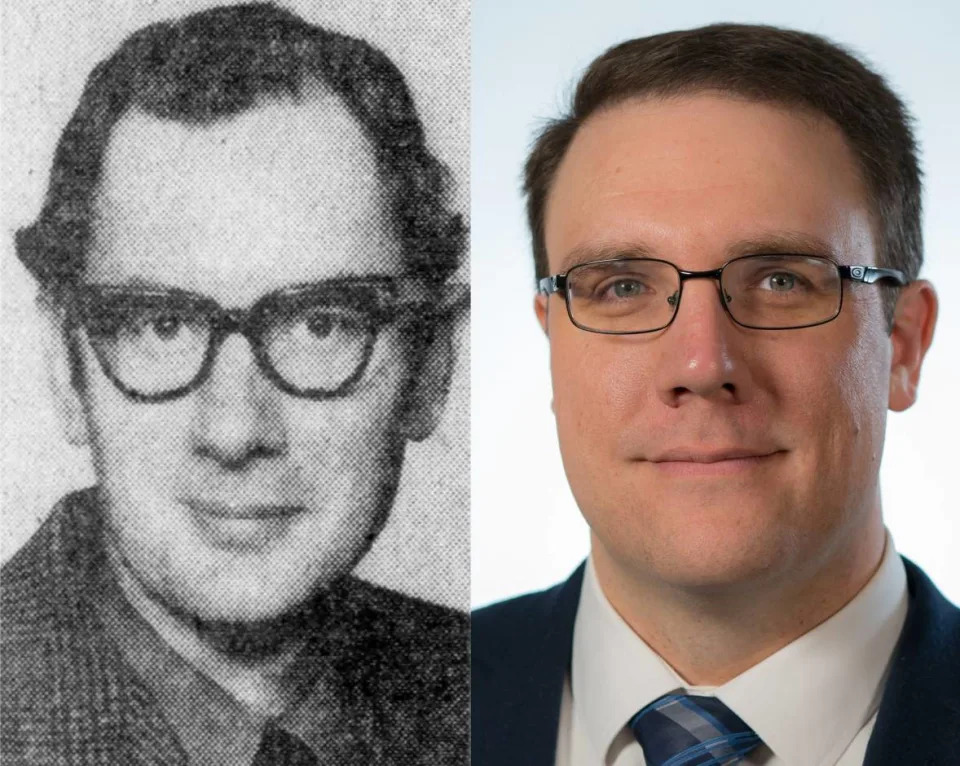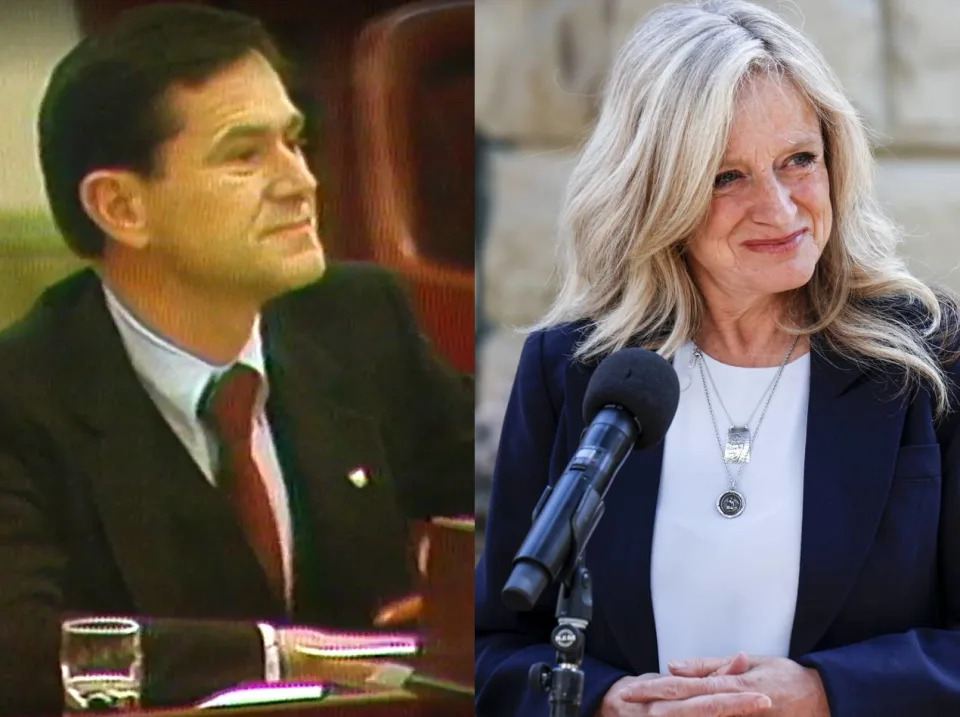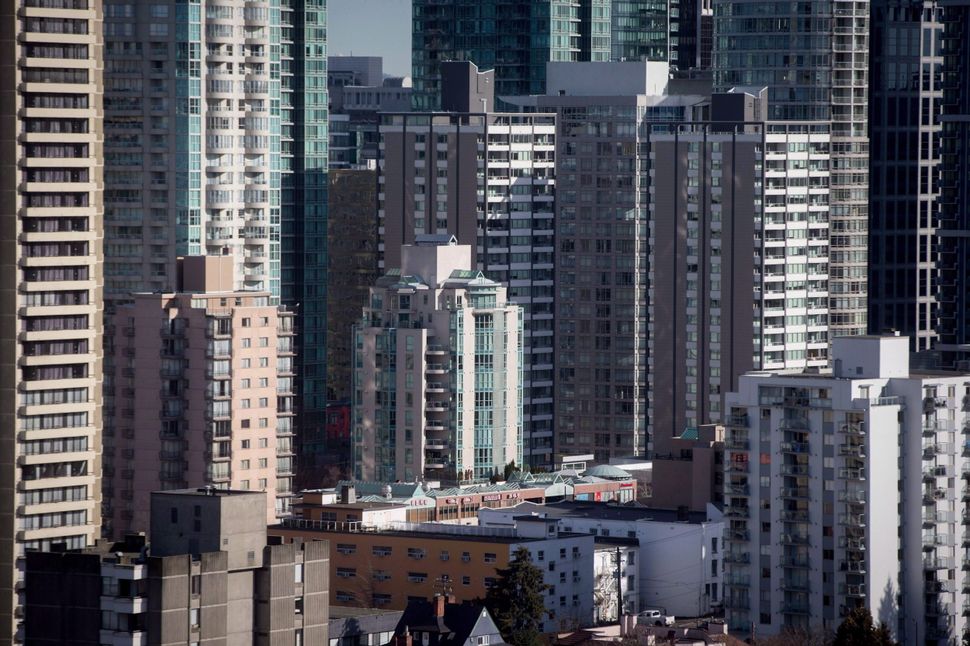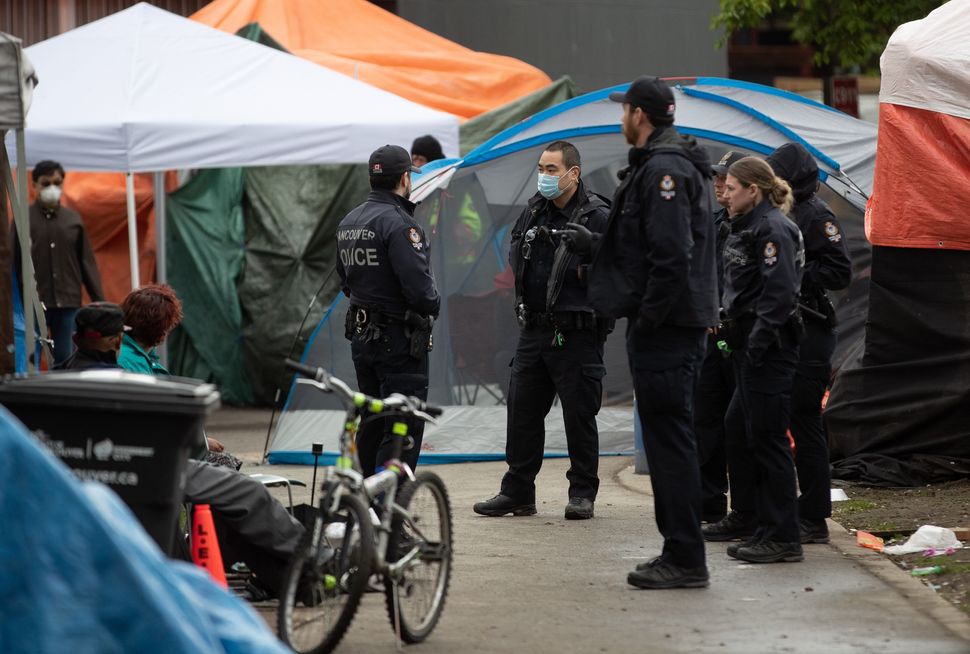As local governments across the United States began the massive task of counting the nation's unhoused people this week, legislators in states like Kentucky are gearing up to criminalize homelessness — with the Supreme Court recently agreeing to hear a landmark case out of California that will decide how far cities can go in punishing unsheltered people.
An army of volunteers began conducting the annual Point-in-Time surveys this week to map the extent and gravity of the nation's homelessness crisis, collecting counts of how many people are currently experiencing homelessness to submit to the federal government. Federal resources are allocated to local communities each year based on the national count.
The survey comes two weeks after the Supreme Court agreed to consider whether fining or arresting people experiencing homelessness, and who don't have access to alternative shelter, violates the Eighth Amendment. The case will impact camping policies nationwide.
One such policy, expansive legislation that would permit property owners to use force — including potentially lethal force — against unhoused people found camping on private property, passed Kentucky's GOP-controlled House of Representatives Thursday. House Bill 5, also known as the "Safer Kentucky Act," includes provisions related to drug possession, bail and homelessness that would intensify criminal penalties for a range of offenses.
Advocates for unhoused Kentuckians have criticized the bill's anti-homelessness provisions, one of which provides that a property owner's use of force is "justifiable" if that individual thinks robbery, criminal trespass or "unlawful camping" is taking place on the property. That justification extends to "deadly physical force" in the event a defendant believes an unhoused person is attempting to "dispossess" them of the property, robbing them or committing arson. The legislation would also bar local municipalities from trying to preempt state laws and make illegal unsanctioned encampments that unhoused Kentuckians erect.
Representatives in the state's lower chamber passed the legislation Thursday evening in a 74-22 vote, according to the Louisville Courier-Journal, pushing the matter to the state's Senate.
Supporters of the bill say its full slate of measures would improve overall public safety. But it only "purports" to do so, counters Catherine McGeeney, the director of communications for Louisville organization Coalition for the Homeless.
"We're alarmed that the state legislature is saying that, 'We care about the safety of property owners. We care about the safety of people who have homes, but we are unconcerned with the safety of people who are unhoused or unsheltered,'" McGeeney told Salon before the vote took place Thursday.
As the country's homelessness and housing crises deepen, HB 5 represents a spate of policies that have cropped up across the US that work to criminalize unhoused Americans in increasingly extreme measures, often going against known evidence-based approaches to ending homelessness.
A "State Level Homelessness Criminalization" tracker, developed by the National Homelessness Law Center and the National Coalition for the Homeless, has tracked 29 bills that have been introduced in state legislatures across the US in the last three years. Most anti-homeless legislation, however, appears at the local level, which the tracker does not account for, Jesse Rabinowitz, the National Homelessness Law Center's campaign and communications director, explained.
A majority of these state-level policies aim to implement some form of statewide ban on building encampments in certain public spaces and seek to impose fines or criminal penalties for doing so. Others also authorize law enforcement to clear these camps or cut funding from evidence-based, supportive approaches like Housing First programs, which prioritize getting unhoused people into permanent housing without requiring them to first participate in other services.
Earlier this month, a bill was introduced in Indiana that would ban and criminalize camping statewide, classifying it as a Class C misdemeanor punishable by up to 60 days in jail and a $500 fine, among a slate of other measures.
Two bills in California's State Legislature that failed in committee last year have been granted reconsideration and amended this year. An assembly proposal seeks to authorize local prosecutors to impose a $10 fine on anyone who camps within 10 feet of a school, while a senate bill aims to prohibit a person from sitting, lying, sleeping or storing personal property on any public right-of-way within 1000 feet of a school, daycare center, park or library.
But the "Safer Kentucky Act" marks a new height in the extremity of the measures because of it's allowance for use of force, Rabinowitz told Salon.
"The Kentucky bill was certainly the most extreme example we've seen," he said. "But all of these efforts to criminalize and arrest people experiencing homelessness, to take away the housing that ends homelessness and to force people to live in state-sanctioned camps, are extreme."
The policies seeking to address homelessness aren't distinctly partisan, Dennis Culhane, a professor of social policy at the University of Pennsylvania specializing in homelessness, told Salon. Instead, they come from both liberal and conservative local and state governments succumbing to pressure from commercial business leaders and the tourism industries, which often take issue with the visibility of encampments erected by unhoused people, he said.
Ann Oliva, the CEO of the nonpartisan National Alliance to End Homelessness, agreed but noted that some of the "really damaging rhetoric comes from the very top" and the right wing, citing former President Donald Trump's comments on homelessness during his 2024 campaign.
Many of the state bills follow the model legislation outlined by the Cicero Institute, a self-described "non-partisan policy organization" that Vice reported runs Libertarian. The legislation offered by the institute, which has been lobbying for anti-homeless bills across the country, calls for banning camping and curtailing funding for Housing First programs, which the U.S. Department of Housing and Urban Development endorses.
The "Safer Kentucky Act" mirrors the Cicero Institute guidelines, as do 18 others included in the homelessness criminalization tracker.
But those suggested measures diverge from data, which instead shows that providing safe and affordable housing to people is the best solution to the nation's homelessness crisis, Oliva told Salon.
A 2020 analysis carried out by researchers for HUD and the Centers for Disease Control and Prevention found that, compared to treatment first programs, Housing First programs decreased homelessness rates by 88 percent and improved housing stability by 41 percent. The study also saw participants in the programs reporting an improvement in quality of life, community integration and positive life changes compared to clients in treatment first programs.
In Louisville, Kentucky, for example, Housing First programs have maintained a 97 to 98 percent success rate over the last decade in keeping people housed for more than two years, said McGeeney, who noted the programs are unable to serve all unhoused people in Louisville because of a lack of funding.
Punitive measures instead cause detriment to the person experiencing homelessness, social services and the system overall, ultimately extending "people's homelessness, rather than actually solving the problem for them," Oliva said.
Being ticketed, fined or arrested for "living in an unsheltered location" can "snowball" for a person experiencing homelessness because they lack the resources to pay the fine, she continued. Repeated fines over time stack up into a criminal offense that will then appear on the person's criminal record, and the record will make it more difficult to obtain a job or a lease for housing.
Other criminalizing measures, like encampment clearings, further build unhoused Americans' distrust in the system, while disconnecting them from resources and social services that they've already started processes with, Oliva continued. That displacement makes it more challenging for service providers to locate the unsheltered person, address their needs and continue to build trust, which detracts from the goal of providing housing.
"We don't have enough resources in the system to serve everybody, but this kind of approach actually makes the system less efficient. It makes the system have to work harder to get a person into a stable situation," Oliva added, noting that these disadvantages also further marginalize groups who are overrepresented in the homeless population like Indigenous and Black people, disabled people and LGBTQ people.
Just over 653,000 people in the US were experiencing homelessness in on any given night in 2023, according to HUD's 2023 Annual Homelessness Assessment report. Nearly 257,000 of those Americans were unsheltered, a number marked by a 10 percent increase in the volume of people experiencing unsheltered homelessness between 2022 and 2023. That value, according to Oliva, has increased every year since 2006.
Forty percent of the more than 1.1 million year-round, dedicated beds nationwide were available to people currently experiencing homelessness, the report also found. But an approximately "200,000 bed shortfall" compared to the number of people experiencing homelessness still remained, it said.
Want a daily wrap-up of all the news and commentary Salon has to offer? Subscribe to our morning newsletter, Crash Course.
The underlying cause of homelessness in the country today is its lack of affordable and accessible housing, according to Culhane, who previously served as the director of research at the National Center on Homelessness Among Veterans.
As unsheltered homelessness has boomed, the number of cost-burdened renter households has hit a record high, amounting to 22.4 million in 2022, according to a new report on U.S. rental housing from Harvard's Joint Center for Housing Studies. Fifty percent of all renter households were also cost-burdened in 2022, a value up 3.2 percent from 2019 and 9 percent from 2001.
"When we had provided access to low-cost housing, for example, throughout much of the 20th century before the decline in Skid Row, there were [single room occupancies], there were hotels and single room rentals that were available to people," Culhane told Salon.
"We used to have a safety net — [Supplemental Security Income] and Medicaid — that, for better or worse, was preventing most cases of homelessness, and that's not true anymore," he added, noting that the SSI program has only increased according to the consumer price index every year, but the CPI doesn't factor in housing costs, which is much higher than the CPI.
According to HUD's Office of Policy Development and Research, the early 1980s saw two severe recessions, persistent inflation and an economic shift due to deindustrialization that devastated cities and led to the contemporary homelessness and housing crises. "This economic shift, along with the widespread deinstitutionalization of individuals experiencing mental illness, cuts to core programs at HUD and other agencies funding social services, and an inadequate supply of affordable housing facilitated a dramatic rise in homelessness," the office wrote in a Spring 2023 periodical.
These factors make clear the stakes in the Supreme Court's decision earlier this month to take on this session what Rabinowitz calls "the most significant case on homelessness since the 1980s": Grants Pass, OR v. Johnson, Gloria, et al.
According to Vox, the case is a challenge to a 2018 federal class action lawsuit in which three people charged the city of Grants Pass of illegally punishing them for being involuntarily homeless. Grants Pass argued unhoused people could just go elsewhere.
A three-judge panel of the Ninth Circuit in 2022 ruled in favor of the plaintiffs, maintaining that the city, consistent with the Eighth Amendment on cruel and unusual punishment, could not enforce anti-camping laws against unsheltered people when no other shelter was available to them.
If the high court, which Rabinowitz said will hear oral arguments in April, rules in favor of Grants Pass, raises the potential for a "domino effect" that would push more elected officials toward criminalization instead of pursuing housing and services programs, Oliva said.
"When one community like Grants Pass basically makes it illegal to be homeless in their community and they're allowed to do that, where do people go?" she asked. "The question that I keep asking everybody is, 'Where do you think people can go?"
If unsheltered people attempt to go to another neighboring town or city in search of shelter and that municipality also does not have enough shelter or allow them to camp, they're left with limited options, including camping on federal property, has had "disastrous effects," Oliva said. "It just moves people around it doesn't actually solve the issue."
"Nobody wants people to be outside," she added, arguing that the U.S. "should not be in a situation where people are forced to be outside. But we should also create responses that treat people like people."


